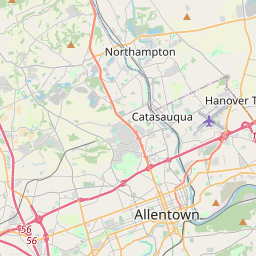Riegelsville Civil War Memorial
Historical marker location:






April 12, 1861: The Civil War begins with the Confederate attack on Fort Sumter, located in South Carolina's Charleston Harbor.
April 15, 1861: President Abraham Lincoln issues a call for 75,000 volunteers to serve in the Union Army to suppress the rebellion.
May 24, 1861: The first major land battle, known as the First Battle of Bull Run (or First Battle of Manassas), takes place in Virginia. It ends in Confederate victory.
September 17, 1862: The Battle of Antietam in Maryland becomes the bloodiest single-day battle in American history, with heavy casualties on both sides. The Union forces, commanded by General George McClellan, manage to halt Confederate General Robert E. Lee's advance into Union territory.
January 1, 1863: President Lincoln issues the Emancipation Proclamation, declaring that all slaves in Confederate-held territories are to be set free. However, the proclamation does not immediately free all slaves in the United States.
July 1-3, 1863: The Battle of Gettysburg in Pennsylvania takes place, resulting in a significant Union victory and inflicting heavy casualties on Confederate forces. It marks a turning point in the war.
November 19, 1863: President Lincoln delivers the Gettysburg Address, emphasizing the principles of liberty, equality, and the preservation of the Union.
April 9, 1865: General Robert E. Lee surrenders to Union General Ulysses S. Grant at Appomattox Court House in Virginia, effectively ending the Civil War.
April 14, 1865: President Lincoln is assassinated by John Wilkes Booth while attending a play at Ford's Theatre in Washington, D.C.
May 10, 1865: Confederate President Jefferson Davis is captured, signaling the collapse of the Confederate government.
December 6, 1865: The Thirteenth Amendment to the United States Constitution is ratified, officially abolishing slavery throughout the country.
While this timeline provides an overview of key events, it is important to note that the Civil War spanned over four years, from 1861 to 1865, and encompassed numerous battles, campaigns, and political developments that shaped the course of American history.
The first World Series of Major League Baseball was held in Pittsburgh in 1903.
In the 17th century, European settlers began to arrive in Bucks County, primarily from England, Wales, and Germany. These settlers were attracted to the fertile land and natural resources of the area. They established prosperous farming communities and built mills along the county's many creeks and rivers, utilizing water power to grind grain and saw lumber.
During the American Revolution, Bucks County played a significant role. It was the site of several important battles and skirmishes, including the Battle of Crooked Billet in 1778. The county's strategic location along the Delaware River made it a crucial crossing point for troops and supplies.
In the 19th and 20th centuries, Bucks County underwent significant economic and social changes. Industrialization brought new opportunities, and the county experienced growth in sectors such as manufacturing and textiles. The development of transportation infrastructure, including railways and canals, further propelled the county's economic progress. Bucks County also became a popular destination for artists and writers seeking inspiration in its picturesque landscapes and quaint towns.
Today, Bucks County continues to thrive as a vibrant and diverse community. Its rich history is preserved in numerous historical sites and museums, attracting tourists and residents alike. The county remains an important cultural and economic hub in Pennsylvania, offering a blend of rural charm and modern amenities.
Bucks County Timeline
This timeline provides a concise overview of the key events in the history of Bucks County, Pennsylvania.
- 1682 - William Penn receives land grant for Pennsylvania from King Charles II.
- 1682 - Bucks County is established as one of the original counties in Pennsylvania.
- 1684 - First courthouse in Bucks County is built in Fallsington.
- 1711 - Bucks County's first jail is constructed in Bristol.
- 1776 - Bucks County residents play a significant role in the American Revolution, with the Battle of Trenton fought nearby.
- 1812 - The Doylestown Courthouse is built, which becomes the county seat.
- 1827 - The first steam-powered mill is constructed in Bucks County.
- 1850 - The Delaware Canal is completed, connecting Bucks County to Philadelphia.
- 1893 - The first electric trolley line is established in Bucks County, revolutionizing transportation.
- 1938 - Bucks County Playhouse opens in New Hope, becoming a renowned theater venue.
- 1979 - Washington Crossing Historic Park is established, commemorating George Washington's crossing of the Delaware River.
- 1989 - Bucks County Community College opens its Upper Bucks Campus in Perkasie.